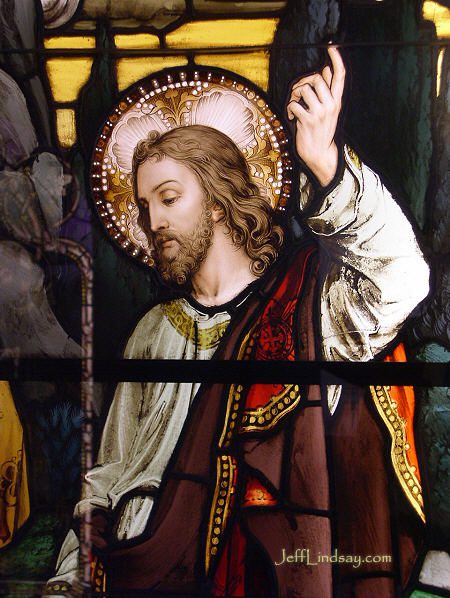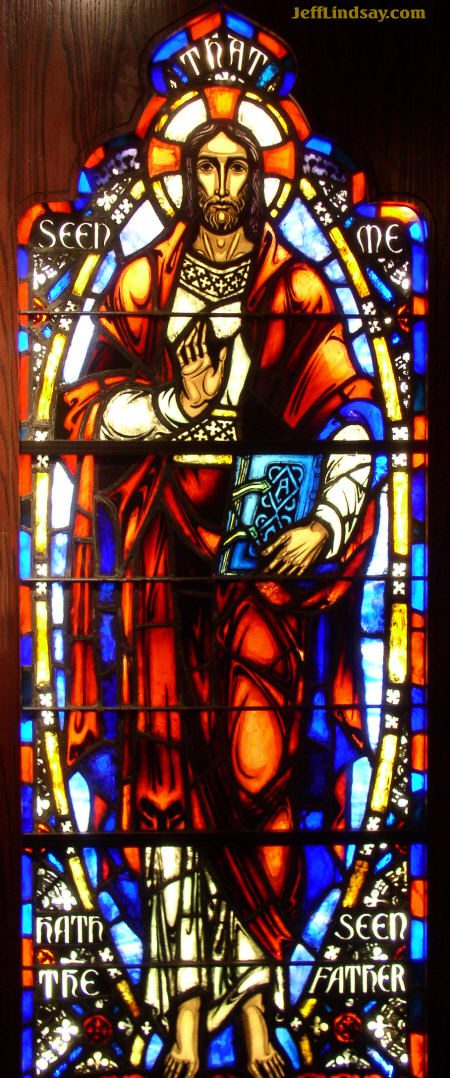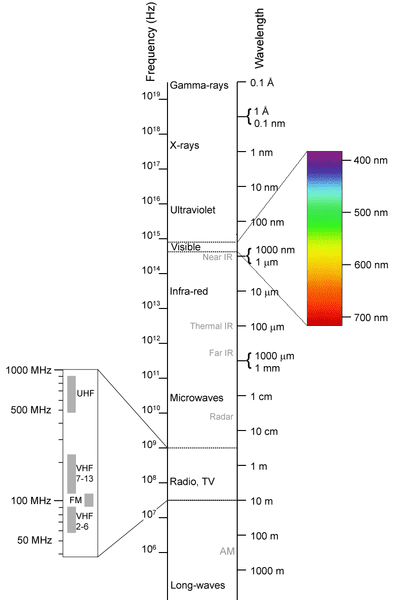
Growing up in an atheist home, Michelle Bowden of England often wondered about God and religion. In “A Penetrating Light” in the Feb. 2009 Ensign, she describes an experience standing in Norwich Cathedral as a young girl, looking at a stained glass window, and wondering if God exists. It was an overcast day and the color were dull.
Gradually, the colors of the stained-glass window became more vivid. A shaft of sunlight had broken through the clouds and was shining through the window. The light also seemed to penetrate my heart, filling every part of me with a warm and comfortable feeling. I had never felt anything so intensely wonderful and joyful. In the midst of this I had the assurance that God did indeed live and that He loved me.
She would later encounter the same experience when she learned about The Church of Jesus Christ of Latter-day Saints, and came to recognize that the penetrating light that gave her both knowledge and joy was a manifestation of the Holy Ghost.
I love the image she creates of looking at a stained glass window when the light is dull, and only appreciating it fully when the sun comes out.
Have you ever noticed just how plain and sometimes even ugly a stained glass window can be when viewed from the outside? The Christian experience, and I would especially say the Latter-day Saint experience, has much in common with viewing a stained glass window. From the outside perspective of the world, it will seem ugly and nonsensical. To someone on the outside, a stained glass window can seem far less meaningful and certainly less useful than, say, a slab of concrete or cinder blocks. Only when the outsider is willing to contemplate things from a different perspective and look at the window from the inside out will there be any hope of appreciating the beauty we enjoy in our position. Even then, coming inside and shifting perspective is not enough. It may be dull and overcast, or even dark outside, and the window, while seeming slightly more interesting than before, still has relatively little appeal and meaning. An outside factor, a direct ray of light from the sun, must be present for the experiment to reveal what really is there in the window. When that light strikes the window and reaches open eyes gazing in the right direction, the window can come alive with color and beauty. Rather than being an ugly flaw as viewed from without, it can become an inspiring highlight rewarding those willing to simply look and see.

If the outsider who comes in to look sees nothing meaningful at first (“OK, a little nicer, but not much”), a little patience may be needed. Direct sunlight may not be there at first glance. Try again, be patient and wait for the clouds to break and the penetrating light of the Spirit to reveal the beauty and meaning that is in the window that once looked ugly and absurd.
Once you understand what the window is and what meaning is created by those numerous pieces of oddly shaped glass, you will understand that the experience of seeing it through the power of direct light was not a delusion, not a passing emotional whimsy, but a reproducible event that adds intellectual meaning and delight. With that new understanding, you can appreciate many windows in many different circumstances – all of which may seem like absurd defects to those never willing to experiment and see things from a new perspective in conditions where the light of the Spirit may be present.
(The photos are from my collection of photos taken at the Smith Museum of Stained Glass.)











Does the LDS church commonly use stained-glass in its architecture (in meeting houses or temples?). I’m a non-Mormon and curious!
A few ward buildings have it, and several temples do, such as the Nauvoo Temple. I think the cost is a key factor. For temples, where cost is less of a concern, I think it often doesn’t fit the function and purposes of the temple rooms, so probably isn’t common for that reason. That’s my guess.
I love stained glass windows – for short visits as a tourist. Not sure that they really fit all that well into LDS worship. If we kept the lights low enough to really appreciate stained glass windows, we’d have even more people falling asleep during our meetings, especially when I’m speaking.
What a great analogy!
The San Diego Temple has extensive textured glass, but it is used in squares on angle, and not used in a picture form.
I’m so grateful that I decided to see the view from inside!
Jeff, the people in the congregation aren’t sleeping when you speak. You just bring the Holy Ghost so powerfully, that when it hits them, they just pass out, like when Ammon preached to Lamoni, and Aaron to Lamoni’s father.
Mormanity,
Often the Stained glass windows are an indicator of History in a City. IE—–many are donated by specific organizations with no record except the Stained window.
For example—-I know of a local window that was donated by the “Posaune” (Brass) choir in Appleton in 1900.
In fact —-it would be a great project for someone to photograph (in the correct sunlight) the Stained glass windows in Appleton and publish them in a book.
Even when local churches are remodled stained glass windows are moved to a differnt spot of the church and saved.
Great idea, Halibut! Can I use your clout to gain access for some photography?